SNOSD82D June 2018 – September 2022 TMP117
PRODUCTION DATA
- 1 Features
- 2 Applications
- 3 Description
- 4 Revision History
- 5 Pin Configuration and Functions
- 6 Specifications
-
7 Detailed Description
- 7.1 Overview
- 7.2 Functional Block Diagrams
- 7.3 Feature Description
- 7.4 Device Functional Modes
- 7.5
Programming
- 7.5.1 EEPROM Programming
- 7.5.2 Pointer Register
- 7.5.3 I2C and SMBus Interface
- 7.6 Register Map
- 8 Application and Implementation
- 9 Power Supply Recommendations
- 10Layout
- 11Device and Documentation Support
- 12Mechanical, Packaging, and Orderable Information
6.9 Typical Characteristics
at TA = 25°C, V+ = 3.3 V, and measurement taken in oil bath (unless otherwise noted)
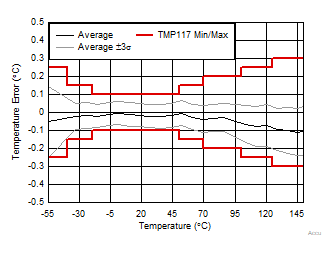
| 1-Hz conversion cycle, 8 averages mode |
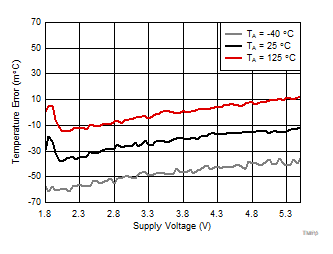 Figure 6-4 Temperature Error vs Supply Voltage
Figure 6-4 Temperature Error vs Supply Voltage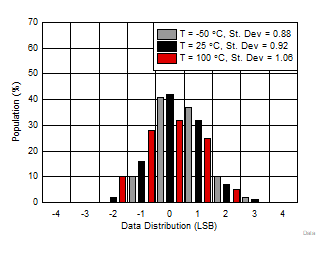
Figure 6-6 Data Reading Distribution Over Temperature (No Averaging, V+ = 3.3 V)
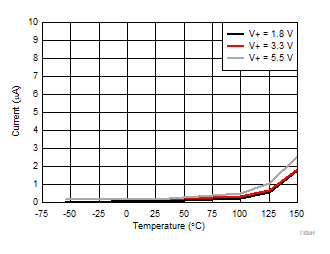
| Serial bus inactive |
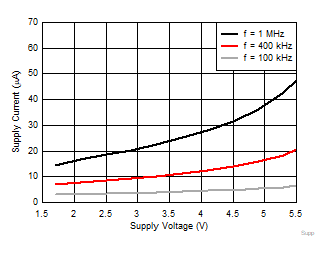
| SCL pin clocked |
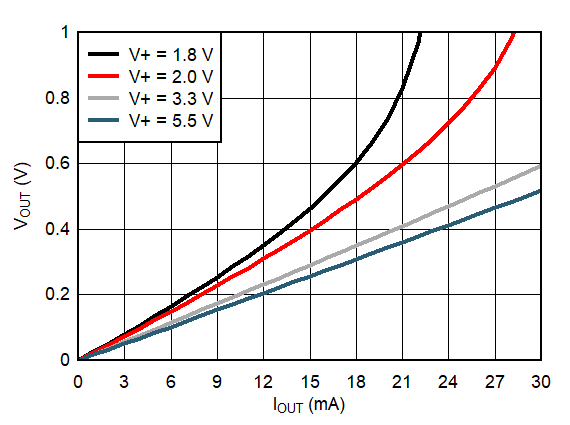
Figure 6-12 ALERT Pin Output Voltage vs Pin Sink Current
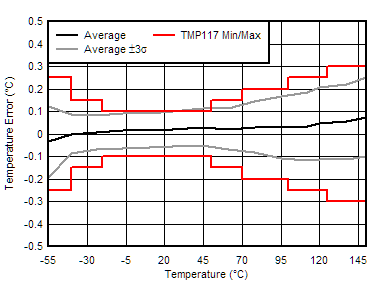
| 1-Hz conversion cycle, 8 averages mode |
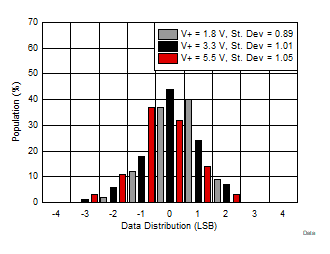
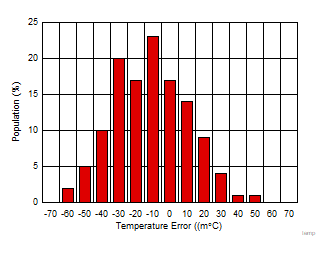
| TA = 25 °C. V+ = 3.3 V. One-shot mode with averaging = 8. |
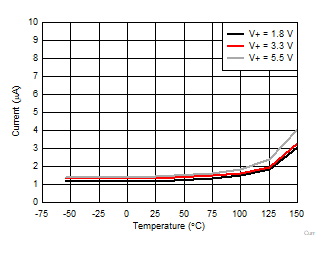
| Serial bus inactive |
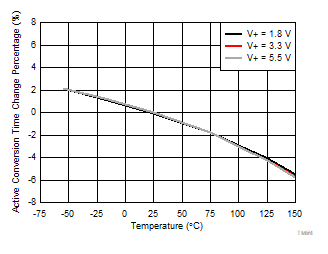
| Normalized to 25°C and V+ = 3.3 V |
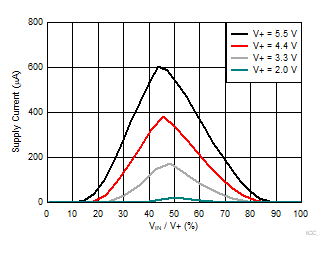
| Input voltage of SCL, SDA, or ADD0 pin |